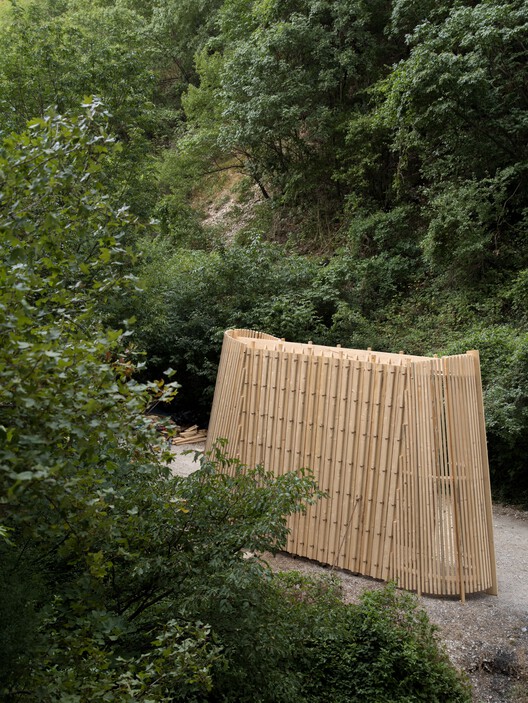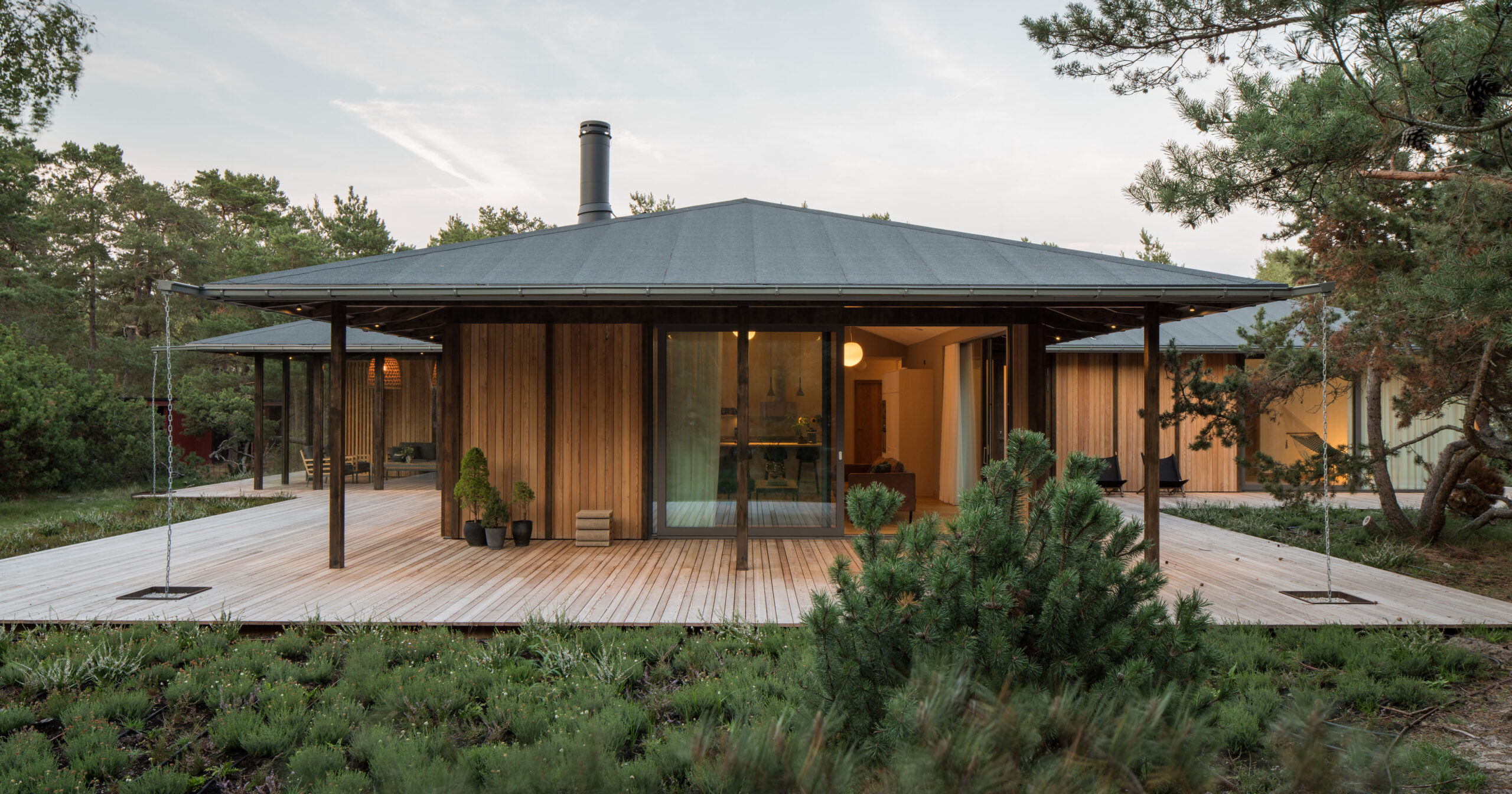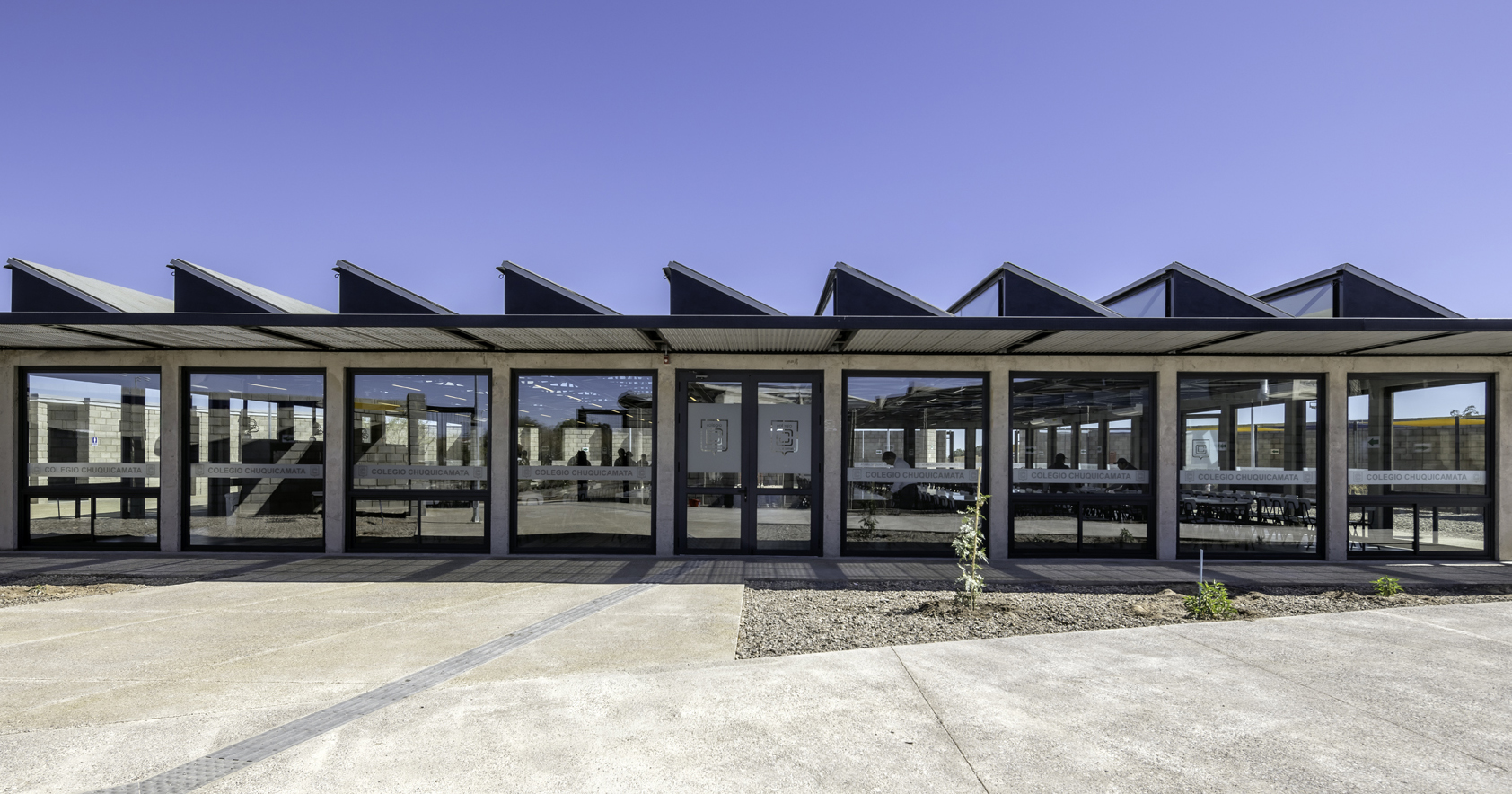nArchitects designs twin park pavilions on either side of the Hudson River


Brooklyn-based studio nArchitects has designed two waterfront park pavilions that address the conditions of flood-prone sites along the Hudson River in New York and New Jersey, USA.
Both completed in 2024, the Gansevoort Peninsula Pavilion is located on the western side of Manhattan and projects into the Hudson River, while the ResilienCity Park Pavilion sits in the floodplain in Hoboken, New Jersey.

"We wanted the pavilions to feel open with portals that bring you into the parks," Mimi Hoang, co-founding partner of nArchitects, told Dezeen.
Designed for the Hudson River Park Trust, the Gansevoort Peninsula Park covers 5.65 acres on a previous mercantile and industrial site owned by the Department of Sanitation.

With landscape design by Field Operations, the park revitalises the last remaining stretch of 12th Avenue with a beach, kayak launch, sports field, salt marsh, boardwalk and open space for the community.
The original installation featured large cuts into a dilapidated warehouse, and nArchitects created similar geometric forms and light effects by subtracting sections of the pavilion canopy.

The pavilion is composed of three volumes – a concession stand, a restroom block and a utility hub for Heatherwick Studio's Little Island nearby – under a concrete canopy that is punctured to allow sunlight down to the planted roofs of the volumes.
Wrapped in an ultra-high-performance concrete, perforated rainstreet, the pavilion has no interior gathering space.

"A series of portals between the volumes and the canopy frame views towards the water, connecting the pedestrian and bike promenade activity on the east with the park activities to the west," the studio said.
The windows and flood doors are painted orange, and when the pavilion is illuminated at night, it appears to glow amber from the inside.

Across the River, ResilienCity Park is now Hoboken's largest public park at 5.4 acres, completed with Philadelphia-based Olin Studio.
The pavilion sits on the park's highest point with views of the surrounding sports fields, passive playspaces, neighbourhood and nearby Palisades Park.
The oversized canopy made of corrugated, perforated stainless steel creates a porch-like environment for the two volumes – housing a flexible community room and a cafe space – clad in a vertical granite rain screen.
Circular openings were cut into the canopy, allowing plants to climb up thin columns and onto the roof in what Hoang called "Dr Seuss trees" that connect the pavilion to the larger landscape design.

"This is the gateway, rather than the jewel of the park," Hoang said, emphasising the importance of the space between the volumes for community building and programming.
The glass of the doors and windows was selected to hold up against the hydrostatic force of floodwaters, and the bottom sills of the windows are lifted out of the flood elevation.

Additionally, the park sits on water detention tanks that hold one million gallons of stormwater, in addition to the 750,000 gallons of water that can be retained in the soft surfaces.
Other waterfront projects nArchitects has completed include a mass timber nature center set in the sand dunes of Long Island and the revitalisation of Chicago's century-old Navy Pier with James Corner Field Operations.
The photography is by Iwan Baan unless otherwise noted.
Project credits:
Gansevoort Peninsula Park
Architecture: nARCHITECTS
Landscape Architecture: Field Operations (Prime)
Structural Engineer: Silman
MEP Engineer: Plus Group
Lighting Consultant: HLB
Façade Consultant: Front
Client: Hudson River Park Trust
ResilienCity Park
Architecture: nARCHITECTS
Civil & Environmental Engineer: E&LP (Prime)
Landscape Architect: OLIN
Structural Engineer: Silman
MEP Engineer: OLA Consulting Engineers
Lighting Designer: Lumen Architecture
Client: City of Hoboken (part of NJ larger resiliency initiatives)
The post nArchitects designs twin park pavilions on either side of the Hudson River appeared first on Dezeen.








_003.JPG)










































